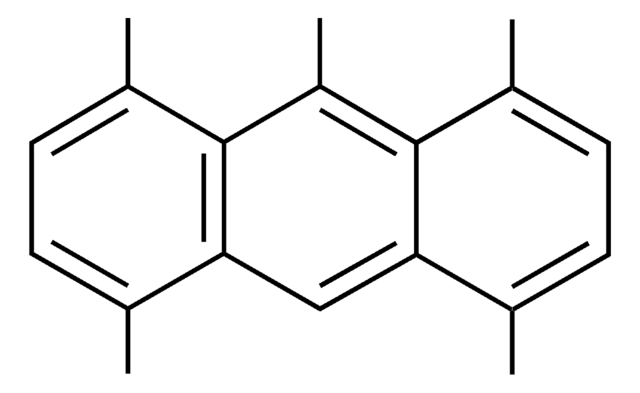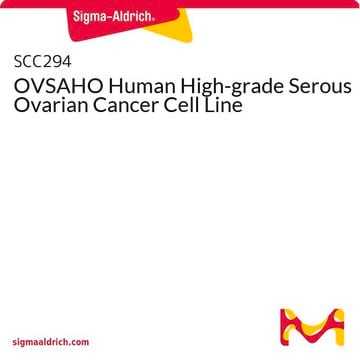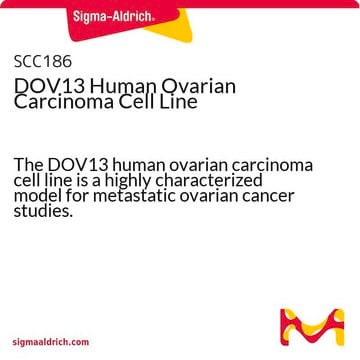Allgemeine Beschreibung
The BG-1 human ovarian adenocarcinoma cell line is one of the most widely used cell lines in ovarian cancer research, characterized by clinically relevant expression levels of both progesterone receptor and estrogen receptor and a highly robust response to exogenously-applied estrogen in vitro.2 BG-1 cells secrete cancer antigen 125 (CA-125)3 and expressed E-cadherin, an epithelial cell marker.4 The BG-1 human ovarian adenocarcinoma was derived from a stage III primary solid tumor and is a representative model of the most common ovarian cancers.
Anwendung
Each vial contains ≥1X10⁶ cells/vial viable cells.Cells are tested negative for infectious diseases by a Human Essential CLEAR panel by Charles River Animal Diagnostic Services.Cells are verified to be of human origin and negative for inter-species contamination from mouse, rat, Chinese hamster, Golden Syrian hamster, and Non-human Primate (NHP) as assessed by a Contamination Clear panel by Charles River Animal Diagnostic Services Cells are negative for mycoplasma contamination.
Worldwide, ovarian cancer is estimated to cause over 140,000 deaths annually.1 The difficulty of early detection means that nearly 3 out of 4 cases are diagnosed at an advanced stage,1 highlighting the necessity of clinically relevant cellular models for understanding the ovarian cancer physiology at advanced stages. Ovarian cancers retaining functional expression of progesterone receptor and estrogen receptors typically have a better prognosis than cancers lacking expression of these receptors, making these carcinomas amenable to therapeutic intervention.The BG-1 human ovarian adenocarcinoma cell line is one of the most widely used cell lines in ovarian cancer research, characterized by clinically relevant expression levels of both progesterone receptor and estrogen receptor and a highly robust response to exogenously-applied estrogen in vitro.2 BG-1 cells secrete cancer antigen 125 (CA-125)3 and expressed E-cadherin, an epithelial cell marker.4 The BG-1 human ovarian adenocarcinoma was derived from a stage III primary solid tumor and is a representative model of the most common ovarian cancers.Source The BG-1 cell line was derived from a poorly differentiated stage III solid primary ovarian tumor from a patient of unspecified age.2 SCC415 has been genetically validated as an authentic BG-1 cell line.References1. Jemal A, Bray F, Center MM, FerlayJ, Ward E, Forman D. CA Cancer J Clin. 2011; 61(2):69-90.2. Geisinger KR et al. Cancer. 1989; 63(2):280-288.3. Li Y et al. Mol Endocrinol 2014; 28(12):2072-2081. 4. Yi BR, Kim TH, Kim YS, Choi KC. Int J Oncol 2015; 46(1): 272-280.
Leistungsmerkmale und Vorteile
BG-1 cancer cell line is a good model for ovarian adenocarinoma
Lagerung und Haltbarkeit
The cells should be stored in liquid nitrogen. The cells can be cultured for at least 10 passages after initial thawing without significantly affecting the cell marker expression and functionality.
Sonstige Hinweise
This product is intended for sale and sold solely to academic institutions for internal academic research use per the terms of the “Academic Use Agreement” as detailed in the product documentation. For information regarding any other use, please contact licensing@emdmillipore.com.
Haftungsausschluss
RESEARCH USE ONLY. This product is regulated in France when intended to be used for scientific purposes, including for import and export activities (Article L 1211-1 paragraph 2 of the Public Health Code). The purchaser (i.e. enduser) is required to obtain an import authorization from the France Ministry of Research referred in the Article L1245-5-1 II. of Public Health Code. By ordering this product, you are confirming that you have obtained the proper import authorization.
Unless otherwise stated in our catalog or other company documentation accompanying the product(s), our products are intended for research use only and are not to be used for any other purpose, which includes but is not limited to, unauthorized commercial uses, in vitro diagnostic uses, ex vivo or in vivo therapeutic uses or any type of consumption or application to humans or animals.







